Abstract
The amounts of [14C]histamine in arterial blood, in renal venous blood and in urine during a steady intravenous infusion of [14C]histamine were measured in five anaesthetized dogs. The extraction ratio for [14C]histamine was 0.7 to 0.8, indicating that the histamine was efficiently taken up from the blood by the kidney. Only a small part (14 to 18%) of the [14C]histamine removed from the blood by the kidney appeared in the urine as histamine. Evidence was obtained that [14C]histamine was metabolized in the kidney not only by histaminase (diamine oxidase) but also by the histamine methylating enzyme.
Full text
PDF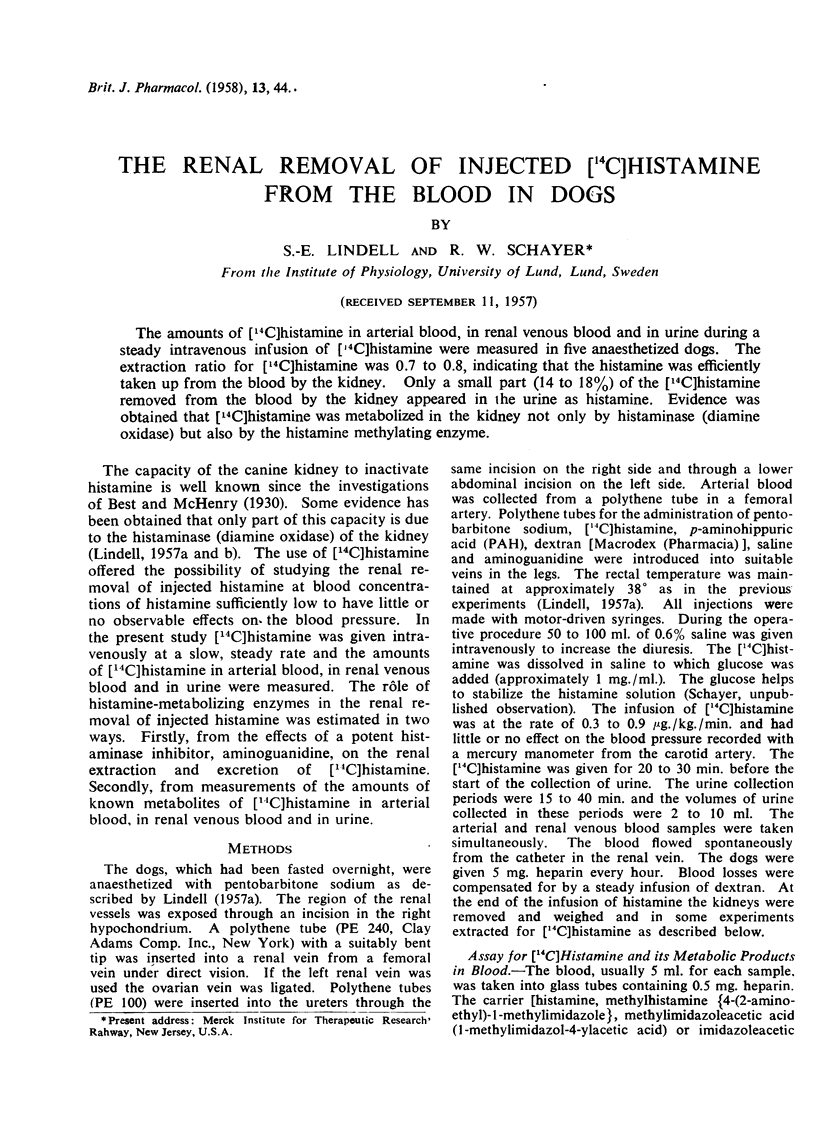
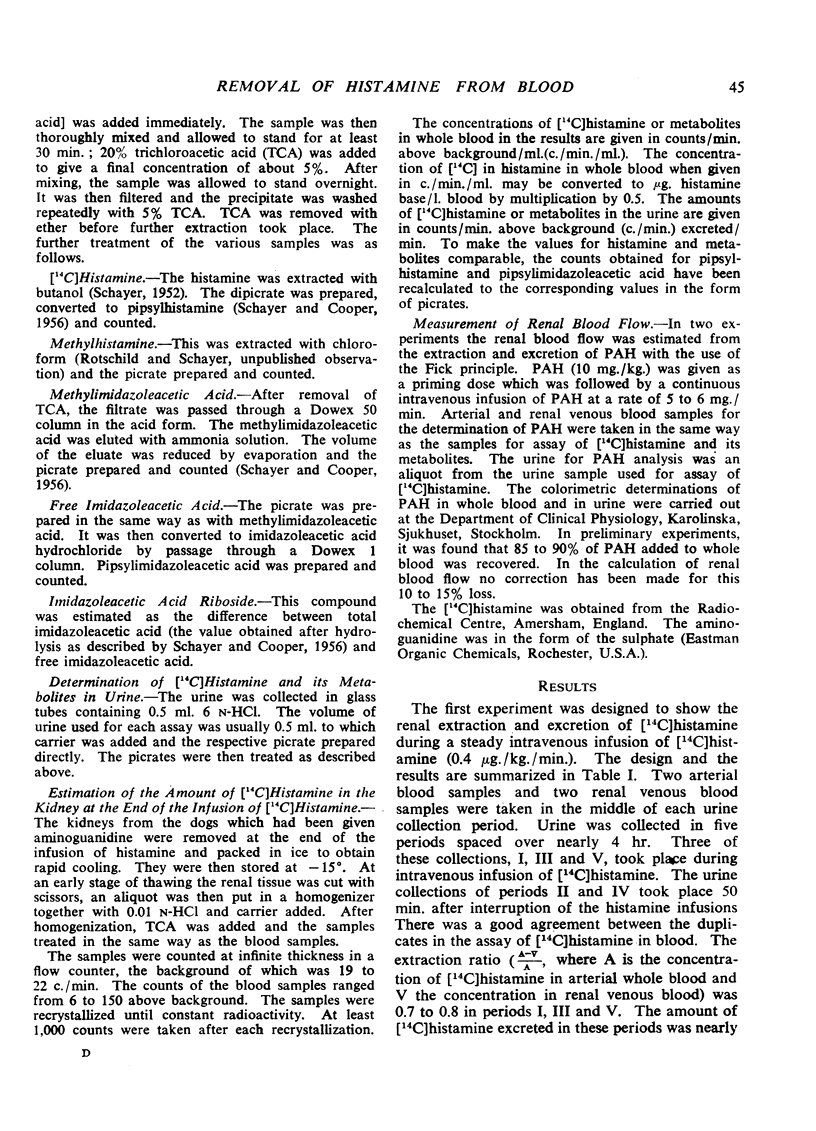
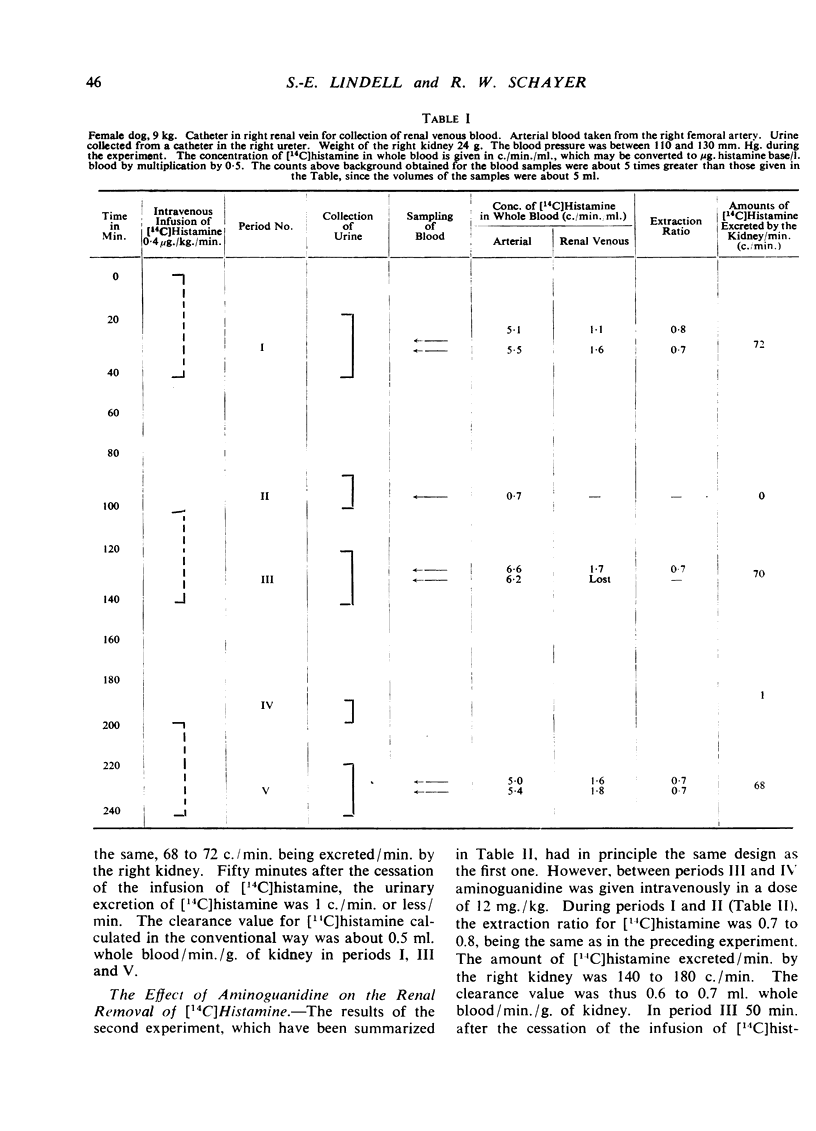
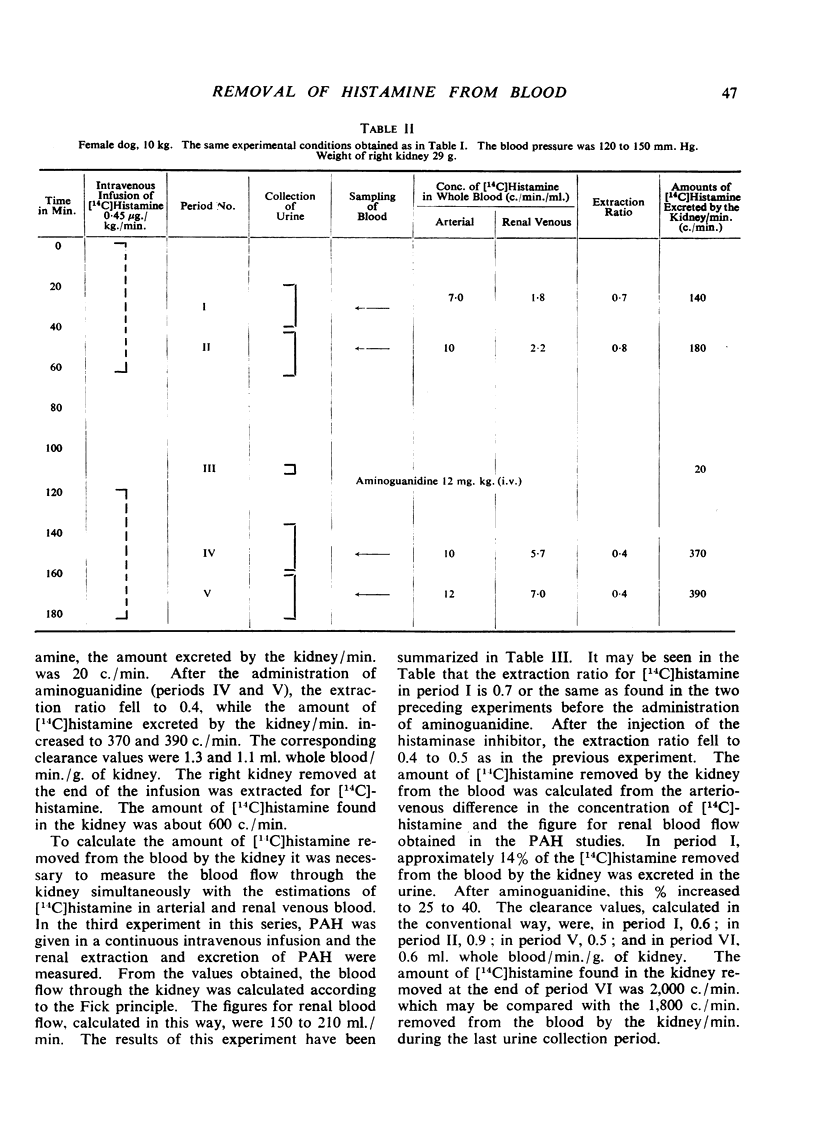
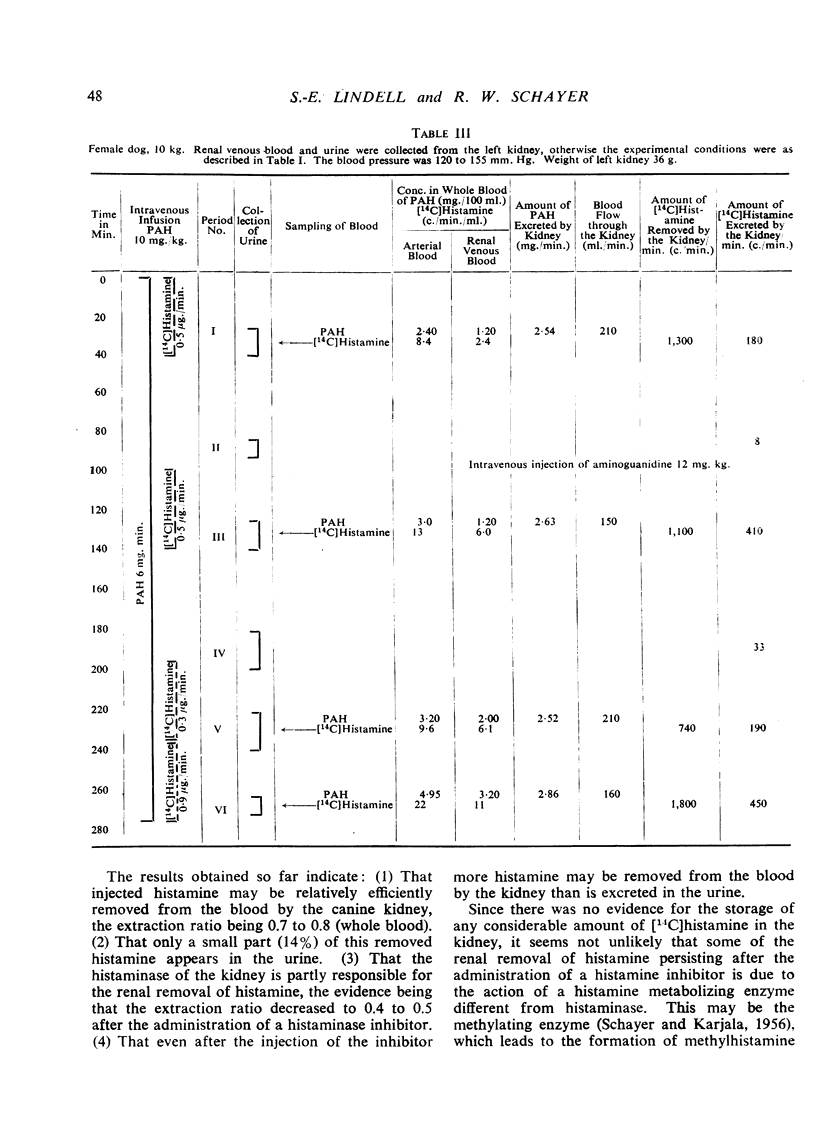

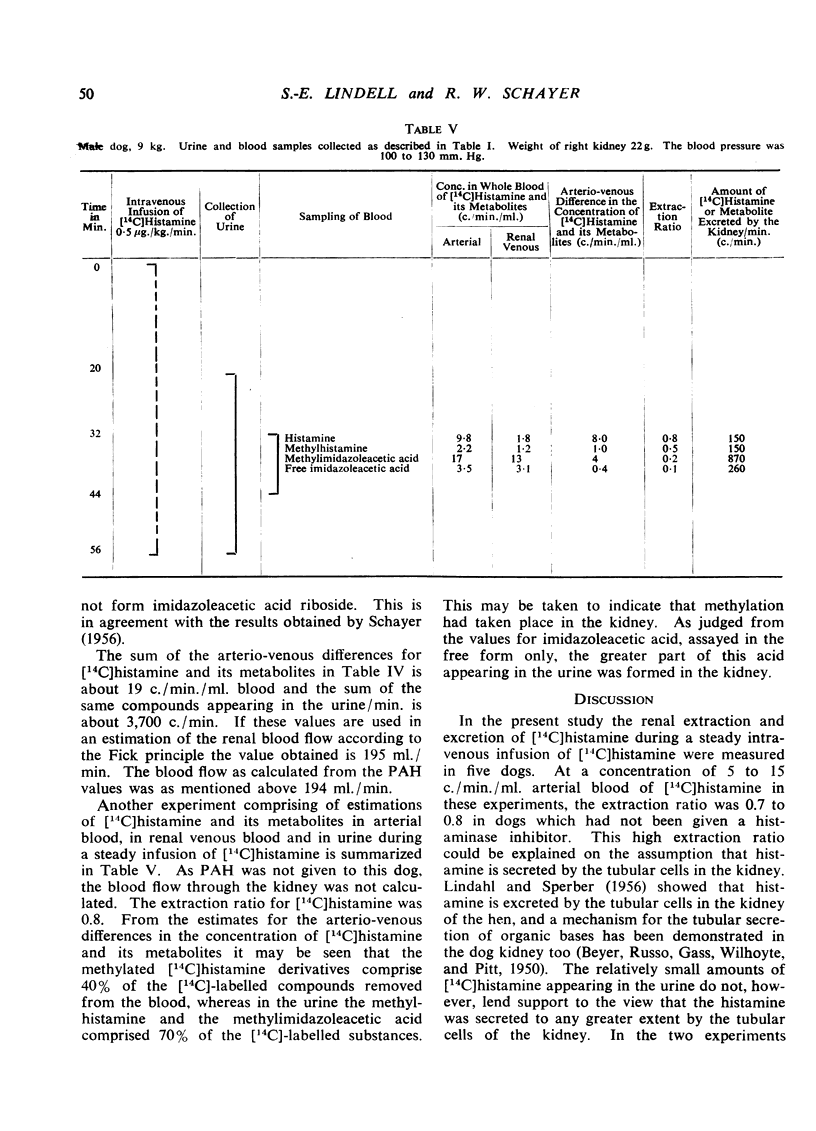

Selected References
These references are in PubMed. This may not be the complete list of references from this article.
- Best C. H., McHenry E. W. The inactivation of histamine. J Physiol. 1930 Dec 4;70(4):349–372. doi: 10.1113/jphysiol.1930.sp002700. [DOI] [PMC free article] [PubMed] [Google Scholar]
- KARJALA S. A., TURNQUEST B., 3rd, SCHAYER R. W. Urinary metabolites of radioactive histamine. J Biol Chem. 1956 Mar;219(1):9–12. [PubMed] [Google Scholar]
- LINDELL S. E., WESTLING H. Potentiation by histaminase inhibitors of the blood pressure responses to histamine in cats. Acta Physiol Scand. 1956 Nov 5;37(4):307–323. doi: 10.1111/j.1748-1716.1956.tb01366.x. [DOI] [PubMed] [Google Scholar]
- SCHAYER R. W. Biogenesis of histamine. J Biol Chem. 1952 Nov;199(1):245–250. [PubMed] [Google Scholar]
- SCHAYER R. W., KARJALA S. A. Ring N methylation; a major route of histamine metabolism. J Biol Chem. 1956 Jul;221(1):307–313. [PubMed] [Google Scholar]


